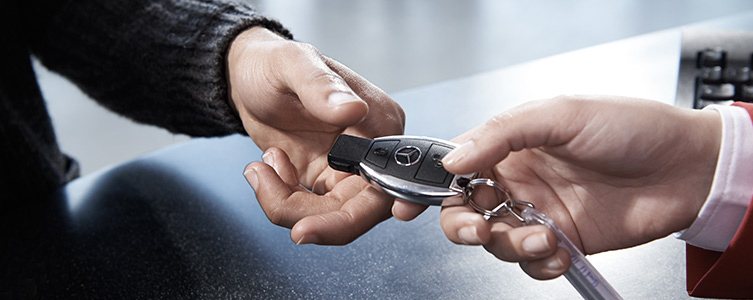Car hire in Munich
Munich, the capital of Bavaria, is a vibrant city with a modern lifestyle renowned for its art, architecture, culture and its world-famous Oktoberfest.More and more visitors come every year to spend time in Germany's unofficial southern capital and we're here to help. Avis has car rental stations at Munich Airport, railway station and other areas of the city.

Popular car hire locations in Munich
Plan your journey in Munich
Culture hits you from every direction in Munich: over 80 museums will compete for your attention. At the neoclassical temple housing the Alte Pinakothek museum, the lovingly curated work of Old European Masters is a glorious sight to behold. Clue yourself up on Bavaria’s history at century-old museum The Munich Residence, a former royal palace.An astonishingly green city, Munich boasts 750 miles of tree-lined bike paths, lavish gardens (of the baroque palace Nymphenburg) and parkland to rival New York’s Central Park in acreage (the sprawling English Garden).
Travel to the north of the city to spy Olympiapark, built for the 1972 Games. A surprisingly small-scale venue, the park’s swimming hall and ice-skating rink are open to the public.
Visiting in September and October? Oktoberfest has been held in Munich for 200 years and has evolved into a carnivalesque, six-million-person beer binge. Those kinds of crowds evaporate later in winter for those keen to experience the fairy-tale atmosphere of the city’s fantastically festive Christmas markets.
Road trips from Munich
From Munich, the story-book hinterland of Bavaria awaits. The best way to explore this eye-wateringly beautiful landscape is by hire car via the Romantic Road, which stretches from Füssen, 130km south-west of Munich, up to Würzburg through 300km of rolling countryside and vineyards, passing the World Heritage walled towns of Rothenburg ob der Tauber, Dinkelsbühl and Nördlingen.Two hours' drive from Munich, Nuremberg is well worth a side trip. Though it may always be associated with the Nazi movement, and the subsequent international war crimes tribunal which held its leadership to account, medieval Nuremberg must be seen to be believed. Stroll among the old-town's fortifications and up to the hilltop castle before losing yourself in the lively market.
Visiting in ski season? The upmarket, five-ski-area resort of Garmisch-Partenkirchen is just 80km to the south of Munich. However, there are also swathes of empty terrain ideal for backcountry, off-piste skiing. Oberstaufen, two hours' south-west of Munich (near the Swiss border), sits on the doorstep of Hochgrat mountain (1,834m). Fling yourself down a range of 4km deep-powder runs.
Beyond Dirndl and Lederhosen
Anyone who listens to Munich thinks of Oktoberfest, dirndl (the traditional female dress of the region), Lederhosen and maybe also football. The Bavarian capital and the third largest city in Germany (after Berlin and Hamburg) has much more to offer. Book a rental car with Avis and see for yourself.Surprisingly cosy big city Munich was for a long time a small residential city, which only developed into a major city in the 19th century. To this day, Munich has preserved a little of this tranquility, and in quality of life and safety rankings the city always scores very highly indeed.
Strolling city
Park up and begin your exploration at Odeonsplatz. The Feldherrnhalle (Field Marshals' Hall) is modelled on the Loggia dei Lanzi in Florence. The ocher Theatinerkirche church here was built in the style of the Italian late Baroque. The Munich Residenz, the largest inner city palace in Germany, is a mixture of Renaissance, Baroque, Rococo and Classicism. All in all, an impressive ensemble.
Passing the residence in the direction of the city centre, you will reach the Nationaltheater and the Maximilianstraße, which impress with their unique uniform architecture and their noble shops.
Take a walk over the Viktualienmarkt (farmer's market) behind Marienplatz. A foodie's paradise, if the weather is nice sit in the beer garden and watch the hustle and bustle.
Munich also has much to offer as a city of art. Head to Maxvorstadt for a series of renowned museums and art galleries, including the three Pinakotheken (Alte Pinakothek, Neue Pinakothek and Pinakothek der Moderne), the Brandhorst Museum, the Glyptothek and the Antikensammlung on Königsplatz and the Städtische Galerie im Lenbachhaus.
A must for all fans of technology is the Deutsches Museum which sits on an island in the Isar river near the Isartor gate. It is the most visited museum in Germany and the largest science and technology museum in the world.
Traditions, culture and excursions in the countryside
Oktoberfest takes place every year in late September/early October and attracts thousands of tourists to the city. However, the largest folk festival in the world is not best visited by rental car as there are no parking spaces in the area, and drivers will not be able to try the strong local beer.
If you like something more contemplative, go to Auer Dult, a traditional fair in the Au district. It takes place three times a year (May, end of July/beginning of August and end of October). In the summer months you can catch the Filmfest, the Opera Festival in the Nationaltheater, the Tanzwerkstatt Europa and the Tollwood Festival. The latter offers a colourful mix of arts and crafts, organic gastronomy, rock, blues and jazz as well as theatrical performances and performances.
Another attraction is the artificial "standing wave" on the Eisbach river next to Haus der Kunst, which attracts surfers from all over the world and many spectators. Drive with your rental car to Nymphenburg Palace with its castle park. Also on your list should be the Olympic Park, built in 1972 for the Olympic Games.
Driving rules in Germany
Which side of the road?In Germany, please drive on the right side of the road.
Country driving laws
- Mobile phones may only be used with a headset or hands-free device
- At crossroads or junctions in urban areas, you have the right of way if there is a road sign with a yellow diamond at the intersection. A white triangle with a red border indicates you must wait for the oncoming traffic to clear
- Be aware that on unrestricted motorways (autobahns) you can still get a speeding ticket for driving too fast for the prevailing traffic or weather conditions
- A number of German cities have low emission zones that require you to have a special permit to drive through them
- In cities, if you see a blue sign with white car, children and bike symbols on it, you must drive at walking speed
- If you're caught committing a driving offence, the police can issue an on-the-spot fine
Speed limits
All speed signs will be in km/h.
For a standard Avis rental vehicle with no trailers:
- Urban areas: 50km/h (30 mph)
- Rural areas: 100km/h (62 mph)
- Motorways (autobahns): None unless shown. 130km/h (80 mph) is the suggested maximum
Child safety / Seatbelt laws
- It is compulsory for the driver and all passengers to wear a seatbelt
- Children aged under 12 and less than 150cm tall must be seated in an appropriate child restraint for their size
This road rules information is for provided for general guidance only. We endeavour to keep the information up to date and accurate, but any reliance you place on this information is at your own risk.
